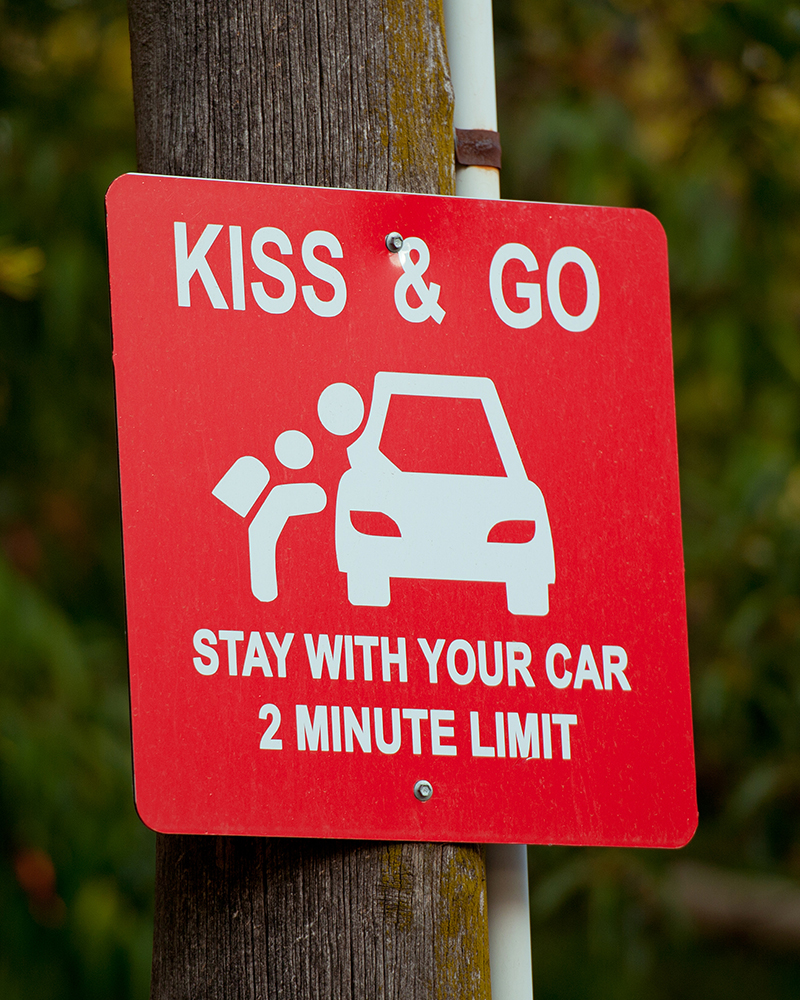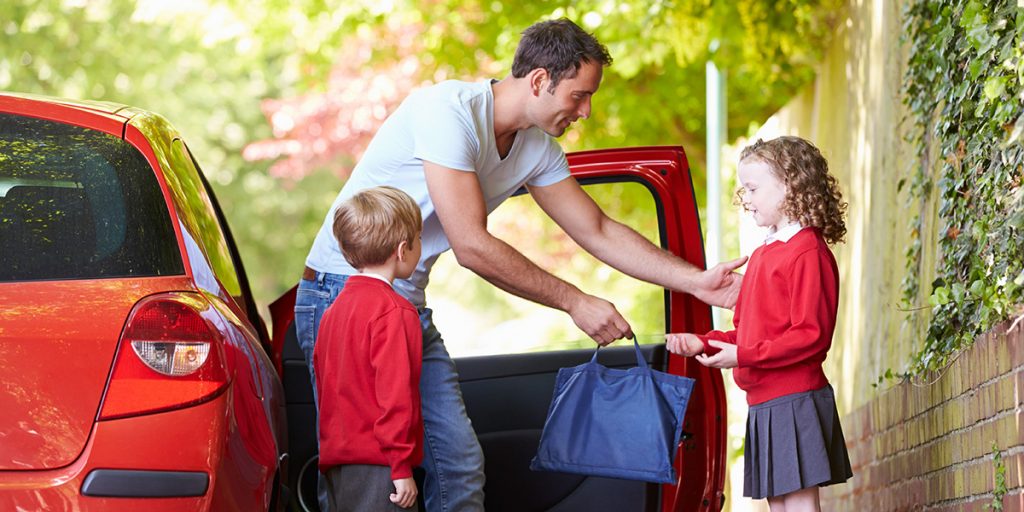
It happens every morning and afternoon during the school year: the vehicles of parents and other caregivers clog up the surroundings of schools at the beginning and end of the school day. A problem that the residents of these areas, but also the schoolchildren themselves, must live with. In fact, there are numerous initiatives that family associations, for the most part, carry out to find ways of regulating and reducing traffic in these areas, in order to avoid noise and pollution and make them safer for children.
One of these measures is known as Kiss & Go. Also known as Kiss & Ride, it involves creating designated areas near school entrances where parents or caregivers can stop their vehicle for a short period of time (the equivalent of the time it takes to kiss them goodbye or greet them). so that the children can get in or out of the car. These areas are usually monitored by volunteer or contracted staff working for the town councils or the schools themselves, who are in charge of bringing the children to the school gate or to the pick-up area at the end of the school day.

The initiative is not new. There are numerous schools in cities in different parts of the planet where it has been used for years. One of them is Kingston, an Australian town located about 20 km from Melbourne, where the system has been implemented in different schools. Among the rules that drivers who take part in this program must follow is to stop the vehicle for a period of time never exceeding two minutes; if they have not had time to drop off or pick up the child during that period, they must start the journey again.
They should also make sure not to move more than three meters away from the car and take special care when driving through the area. Maneuvers such as U-turns are completely prohibited.
Advantages of Kiss & Go
In Madrid, almost a decade ago, the City Council launched the Kiss & Go initiative near the Ciudad de Roma and Fuhem-Montserrat schools, located in the Retiro district. The long queues of cars that formed at the beginning and end of each school day in the area encouraged the council to launch the project.
To make it known to the rest of the families, a group of parents, together with teachers, and with the guidance of the management of the Montserrat school, carried out a communication campaign. As an incentive, they pointed out the main advantages of this system, namely:
- To give children more autonomy.
- To recover public spaces for the use and enjoyment of everyone, especially girls and boys.
- To achieve a friendlier and more sustainable, as well as a safer, school environment.
- To have children walk at least a few meters to school, which, according to numerous studies, is very beneficial to their performance and health.
To encourage children to get their parents to participate in the initiative, the organizers made cards in which the students had to place a stamp (in the shape of a kiss, of course) every time they went or left school with a Kiss & Go. A measure that also made it easier for families to follow the initiative.
During the school year that has just ended, the Kiss & Go of these schools was briefly stopped because its operation required the partial closure of some of the nearby streets at the start and end of each school day, which sparked complaints from some neighbors. However, the city council says it plans to resume the program.
And there’s more
The program has also been met with skepticism voices and detractors who see it as nothing more than a patch on a problem, mobility in school areas, which should be addressed in a more profound way. However, the Kiss & Go formula continues to spread in different cities.
Among the latest to implement it in various schools are the Spanish towns of Gijón, Melilla, Torrelavega, Logroño and León, among others. One of the last to join Kiss & Go has been the capital of Slovakia, Bratislava, where it is has just been launched in the vicinity of the city’s German School. At the school they hope that many others will join this initiative.